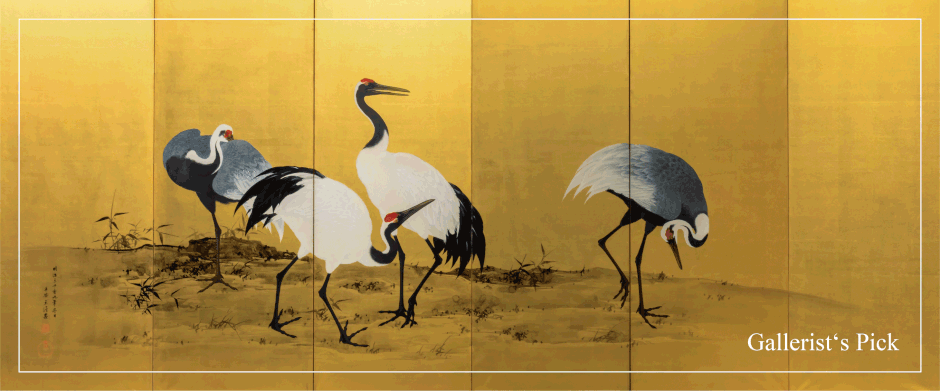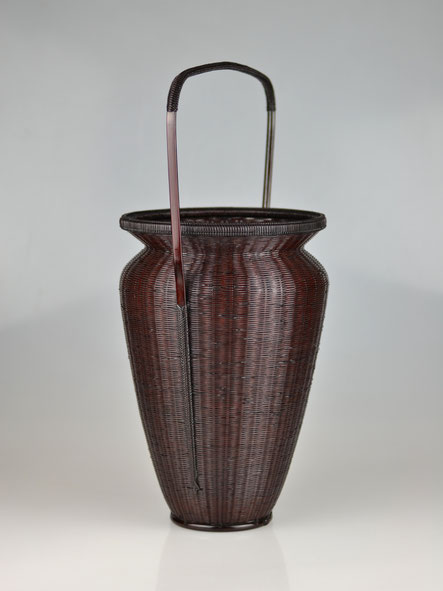Japanese Fine Art
Welcome to our website for Japanese art. We would like to invite you to discover our collection of fine antique works of art, ranging from screen paintings and hanging scroll to traditional ceramics, elegant lacquer works, exceptional sculptures and intricately woven bamboo flower baskets. All of our objects are unique masterpieces carefully selected by the gallerist and art historian Dr. Fabian Alexander Kommoss for their historical significance and outstanding quality. Galerie Kommoss is a leading gallery for fine Japanese art in Europe.

Why Japanese Art?
Refined elegance and astonishing craftsmanship on one side, and rough, coarse-looking ceramics that seem to have been created by nature itself on the other, the wide spectrum of Japanese art is fascinating and never monotonous. In fact, the opposite is true: Whether you look at the more popular and immediately appealing images of a Hokusai, the serene beauty of Japanese Buddhist sculpture, or the often complex aesthetic programs of traditional tea culture, the deeper you delve into the complex images, often subtly imbued with metaphorical meaning or humor, the more exciting it gets. What makes Japanese art so attractive to us is its pervasive characteristic of understanding the natural world as a source of spiritual insight and an instructive mirror of human emotion.
Tigers in Japanese Art
The tiger, a symbol of strength, courage, and leadership, holds a revered place in Japanese art. Often depicted in dynamic natural landscapes like bamboo groves and mountains, the tiger represents not only physical power but also the ideal of balance and harmony. It is seen as a guardian, embodying the connection between authority and peace. In Japanese art, the tiger is frequently associated with the concept of Yin and Yang, symbolically paired with the dragon, its unseen counterpart. Together, these creatures govern the forces of nature—wind and water—representing a harmonious balance of cosmic energy. Through vivid depictions of the tiger, Japanese artists capture both the majesty of the animal and the deeper cultural values of strength, balance, and serenity.
Object of the Month
This beautifully balanced Chinese-style bamboo flower basket exemplifies the refined craftsmanship of Chikuunsai II, a leading figure in Japanese bamboo art. The basket features a rattan-wrapped handle, skillfully woven into the sides of the vessel and elegantly secured near the base with an elaborate strap. The mat-plaited walls extend upwards to a wide, open mouth, encircled by a rattan-wrapped rim that enhances the piece’s structured yet natural form. Resting on a ring made from a single bent bamboo cane, the base is crafted in a chrysanthemum weave, combining openwork and parallel weave patterns.
The Chikuunsai family is one of the most influential lineages in modern Japanese bamboo art. Tanabe Chikuunsai I(1877–1937) founded the family legacy by becoming an independent artist in 1901 after training under Wada Wachisai I, who gave him the name Chikuunsai (meaning "Studio of the Bamboo Cloud"). His exceptional artistry earned him recognition alongside renowned bamboo masters like Iizuka Rōkansai and Yamamoto Chikuryōsai I, with praise even coming from German architect and design theorist Bruno Taut for his outstanding ability.







